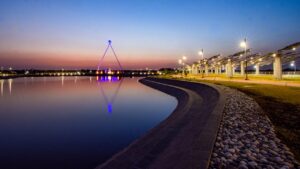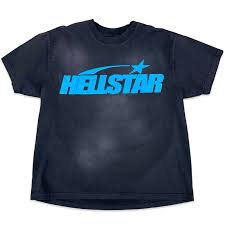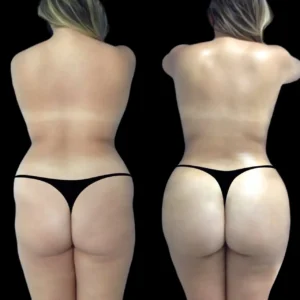
Introduction to the Tarsar Marsar Trek
The Tarsar Marsar trek in Kashmir is not just another Himalayan trail—it’s a journey through postcard-perfect alpine valleys, pine forests, and three breathtaking high-altitude lakes. But if there’s one thing I learned firsthand, it’s that what you carry on your back can make or break your entire experience. Trust me, you don’t want to be the person struggling up a slope because of poor gear choices or feeling miserable at night due to a forgotten thermal layer. This isn’t a casual weekend hike. You’re going to be out in the wilderness, above 13,000 feet, often in unpredictable weather. Packing smart is non-negotiable.
Why Packing Right is Non-Negotiable
There’s no easy way to say this—pack wrong, and you’ll suffer. When you’re trekking in Kashmir’s remote valleys, you’re far from the luxury of buying a missing item. Whether it’s a rainstorm mid-hike or freezing night temperatures near the lakes, the environment can turn harsh quickly. I’ve seen fellow trekkers regret not carrying extra layers or good waterproof boots. Overpacking is just as bad—you don’t want to lug around 15 kilos of unnecessary stuff. Carrying only what you need, nothing more, nothing less, is the aim. And yes, everything I’m sharing below is based on my own time on the trail.
Best Time to Do the Tarsar Marsar Trek and Weather Considerations
Timing matters. Early July to late September is the ideal time of year to complete the Tarsar Marsar trek. Outside this period, snow can block trails, or rain can make them treacherous. July brings blooming wildflowers, August tends to have more settled weather, and September offers crisp air and clearer skies. That said, even in peak season, the weather changes fast. One morning I woke up to a pleasant sun, and the next day I hiked in hail. That’s why your packing needs to consider all scenarios: sunny days, cold nights, and sudden rain. Light, packable layers and waterproof essentials are your best friends.
Trekking Gear You Must Carry
Backpack – Size, Fit & Features
Your backpack is basically your mobile home during the trek, so don’t compromise here. I used a 50-60L backpack with a sturdy hip belt and padded shoulder straps, and it was perfect. Look for a design with a rain cover, multiple compartments, and an internal frame. Why? Because you’re carrying it for 6-7 days straight on uneven terrain. I saw folks with oversized or poorly balanced bags struggling by Day 2. Don’t be them. Try your backpack loaded before you head to Kashmir. Adjust the straps to fit snugly. Believe me, your shoulders and spine will thank you.
Sleeping Bag & Sleeping Mat – Sleep Matters!
Sleep can be elusive at altitude. Nights get chilly, even in August. I carried a sleeping bag rated for -5°C, and I wouldn’t go with anything less. Go for a mummy-shaped one that packs small and insulates better. Pair it with an inflatable or foam sleeping mat. If your trekking company provides one, check if it’s clean and warm enough. I saw someone try to double up their clothes to sleep without a good mat—didn’t work. Without insulation from the ground, your sleeping bag won’t be effective. A good night’s sleep gives you more energy for the following day’s hike. Don’t skimp here.
Layering System – Base, Mid & Outer
When it comes to dressing in the mountains, layering isn’t just a tip—it’s the law. Your base layer should wick sweat (synthetic or merino wool). The mid-layer is your insulator (a fleece or light down jacket). Additionally, your outer layer (a waterproof shell) needs to block rain and wind. I wore all three on most mornings and peeled them off as the sun rose. At night, I’d add thermal innerwear to stay warm. Avoid cotton like the plague—it stays wet and makes you cold. Pack two quick-dry trekking pants, a few moisture-wicking tees, and one light jacket you can trust in a storm.
Rain Gear – Be Ready for Kashmir Showers
Rain in Kashmir can show up with zero warning. A high-quality rain jacket and rain leggings are essential. I made the mistake of carrying just a poncho once—big regret. It flapped around in the wind and didn’t cover my backpack properly. I brought trousers and a full-zip waterproof shell this time. Also, invest in a backpack rain cover and a couple of dry bags. They’ll save your clothes and electronics if the clouds open up. Pro tip: pack an extra pair of socks in a ziplock bag. There’s nothing worse than wet feet at the end of a long trek.
Footwear – Boots & Socks for All Conditions
Let me be brutally honest here: if you don’t invest in proper trekking boots, you’re asking for blisters, cold feet, and misery. I used ankle-length waterproof boots with a solid grip, and they were lifesavers on slippery patches and water crossings. Break them in weeks before the trek. Don’t be the person trying out new shoes on Day 1. Carry at least 4 pairs of good-quality synthetic or wool blend socks—change them often to avoid foot fungus. I also packed a pair of lightweight sandals for evenings at camp. After a hard day of hiking, your feet deserve a rest.
Personal Essentials to Pack
Toiletries and Hygiene Must-Haves
Keeping clean on a multi-day trek isn’t easy, but it’s not impossible either—if you pack smart. I carried a compact toiletry kit that included biodegradable soap, a microfiber towel, wet wipes, a small bottle of hand sanitizer, and a travel toothbrush with toothpaste. Trust me, you’ll thank yourself for carrying toilet paper and ziplock bags (for packing out used paper since you can’t leave it behind). I also included a small nail cutter, a comb, and a roll of tissues. Feminine hygiene products are a must-have if applicable, and I always pack a few extra just in case.
Dry shampoo and face wipes are lifesavers when there’s no water around. For bathroom needs, I brought along a small trowel for digging cat holes—essential for when you’re camping away from designated toilet spots. And yes, always follow Leave No Trace principles. It keeps the trail clean for everyone.
Medications and First Aid Kit
Don’t rely on someone else’s first aid kit—build your own. Mine included basic meds for altitude sickness (Diamox), headaches (paracetamol), diarrhea, allergies (antihistamines), and pain relief. Add Band-Aids, antiseptic cream, crepe bandages, and a few safety pins. I also carried a few rehydration salts and glucose powder for emergencies. You never know when your energy might dip, or when a sudden blister will ruin your hike.
Also, if you have any specific medical conditions or prescriptions, pack at least two to three days’ extra meds in case of delays. Altitude sickness can hit even seasoned trekkers, so don’t underestimate it. I always keep a few extra Diamox tablets and check in with my guide on the signs of AMS (Acute Mountain Sickness).
Sun Protection – Sunglasses, Sunscreen, Lip Balm
The sun at high altitude is brutal. Even if it feels cool, the UV exposure is intense. I always pack polarized sunglasses with UV protection. They help prevent snow blindness, especially on glacier patches. A broad-spectrum sunscreen (SPF 50+) is another essential—apply it every couple of hours on your face, neck, ears, and hands. Don’t forget a high-SPF lip balm. Cracked, sunburned lips can be surprisingly painful.
I also carried a lightweight cap with a neck cover and a buff (multi-functional scarf) to protect against dust, cold air, and sun. These small items take up almost no space but offer big protection throughout the trek.
Food & Hydration Must-Haves
Energy Snacks & Electrolytes
When you’re trekking for hours, your body burns calories fast. I packed a mix of energy bars, trail mix, dry fruits, and chocolate. Don’t rely solely on your trekking group’s meals—sometimes your stomach just needs a quick boost between stops. I also carried a few packets of ORS (oral rehydration salts) and energy drink powder. They help replenish minerals and prevent fatigue.
Think of your snack stash as your survival kit. I made sure mine included a mix of sweet and salty items, so I didn’t get taste fatigue. Peanut butter sachets, protein bars, and glucose biscuits were great picks. Easy to pack, high on energy, and a morale booster on tough climbs.
Water Bottles and Purification Options
Water is life—literally. I carried two one-liter bottles and a foldable bottle for backup. The trail has water sources, but you can’t always rely on their cleanliness. That’s why I used chlorine tablets and a LifeStraw filter bottle. Lightweight, effective, and no boiling needed. Some folks also carry UV purifiers, but I found tablets and the filter bottle combo most convenient.
Hydration is key to preventing altitude sickness. I made it a habit to sip water every 20 minutes while trekking. Dehydration sneaks up on you at higher altitudes, so don’t wait until you’re thirsty. Also, always refill when you pass a stream—you don’t want to run out during a long climb.
Electronics & Power Essentials
Power Banks and Charging Setup
There are no charging points on the trail—none. So, I carried two power banks (10,000mAh and 20,000mAh) to keep my phone and headlamp charged. If you’re into photography, don’t forget extra camera batteries. The cold drains batteries fast. I kept all electronics in an inner jacket pocket or a dry bag to prevent moisture damage and preserve charge.
Also, keep your phone on airplane mode and reduce screen brightness—it stretches battery life like magic. I used a solar charger once, but weather variability made it unreliable. Power banks are your safest bet.
Headlamp & Extra Batteries
A headlamp is one of those “don’t-leave-home-without-it” items. You’ll need it at campsites, especially for those early morning or late-night toilet trips. Choose one with adjustable brightness and a red light option to avoid blinding your campmates. I carried extra batteries in a waterproof case. Pro tip: keep them close to your body to prevent cold from draining them.
Forget using your phone flashlight—it’s inefficient, drains the battery, and occupies your hand. Trust me, a good headlamp frees your hands and lights the way better on uneven ground.
Documents & Money
Permits, ID Proof & Emergency Contacts
While the Tarsar Marsar trek doesn’t require high-level permissions like some border areas, you still need to carry valid ID proof—preferably a government-issued one like an Aadhaar card, voter ID, or passport. I also took a few photocopies, which helped during registration at base camps or local checkpoints. It’s smart to store a scanned copy of these documents in your email or phone, just in case.
Some trekking companies handle the necessary permits, but it’s always good to double-check. I kept a small waterproof pouch where I stored my ID, insurance details, and emergency contacts. If you’re traveling solo or with a small group, make sure someone back home knows your full itinerary and expected return date. You never want to think about emergencies, but being prepared can make a world of difference.
Cash – How Much and Why It’s Needed
There are zero ATMs beyond Srinagar. Once you hit the base village, it’s a cash economy. I carried ₹3000–₹5000 in small denominations for tips, local purchases, snacks, and emergencies. Don’t expect digital payments in the mountains. Even the smallest expenses—like renting a mule or buying tea from a local dhaba—need cash.
Divide your cash into two or three ziplock bags and stash them in different parts of your backpack. It’s a small hack that helps if one gets wet or misplaced. Avoid carrying big currency notes; locals often won’t have change. Trust me, it’s better to over-carry than be stuck without money in the middle of nowhere.
Miscellaneous Yet Crucial Items
Trekking Poles – Support for Your Knees
I didn’t use trekking poles on my first Himalayan trek—biggest mistake ever. On the Tarsar Marsar trail, especially during descents, they’re a game-changer. Trekking poles reduce impact on your knees, improve balance on rocky terrain, and help maintain rhythm while climbing. I used a lightweight, collapsible pair that fit neatly into the side pocket of my bag when not in use.
Even if you’re in good shape, poles save energy over long distances. Your legs will thank you on Day 5. Trust me, after crossing boulder-strewn ridges or wading through streams, poles feel like an extension of your arms.
Dry Bags and Ziplocks – Organize & Waterproof
The best-kept secret of a well-packed backpack? Dry bags and ziplocks. I carried a few of each in different sizes. One held my clothes, another had electronics, and a third carried documents and snacks. I also used smaller ziplocks for toiletries and medicines. When it rained heavily on Day 3 of the trek, these bags saved my gear from getting soaked.
Dry bags add barely any weight but offer massive peace of mind. Plus, they make unpacking and repacking at camp a breeze. Ever tried digging through a soggy backpack in the rain to find socks? Don’t be that guy—use dry bags.
Lightweight Towel and Quick-Dry Clothing
You won’t find hot showers on the trek, but that doesn’t mean you won’t get wet. I packed a small microfiber towel—it dries quickly, weighs almost nothing, and was perfect for quick body wipes or drying wet feet. Standard cotton towels are heavy, bulky, and take forever to dry.
Same goes for clothing. Quick-dry underwear, synthetic tees, and light layers that wick sweat are absolute musts. I packed two full sets and alternated daily. Wet clothes add weight, chill you fast, and ruin your mood. Quick-dry gear keeps you warm and happy even when nature throws surprises.
What Not to Carry
Avoid Overpacking – Leave These at Home
This might surprise you, but one of the smartest decisions I made was not packing too much. I skipped cotton clothes, jeans (they never dry), heavy books, full-size toiletries, and fancy camera gear I wasn’t going to use. The goal is minimalism with purpose. If you’re second-guessing an item, chances are you won’t need it.
Leave behind duplicate electronics, too many clothes, or any item with “just in case” logic unless it directly affects safety or comfort. I followed the rule of “everything should serve a purpose” and kept my backpack under 10kg. My knees, shoulders, and fellow trekkers envied me.
A Word About Trekking with Local Operators
My Experience with a Trusted Local Company (Subtle Referral)
If it’s your first high-altitude trek, or even if you’re experienced but unfamiliar with Kashmir terrain, I strongly suggest going with a local guide or trekking operator. During my tarsar marsar lake trek journey, I joined a small group led by a local company that absolutely knew the terrain, weather patterns, and how to handle emergencies.
The experience was smooth—they arranged permits, quality gear, meals, and even helped with acclimatization tips. What stood out for me was how connected they were with the villages and locals. I never felt like a tourist; I felt part of the place. If you’re wondering who I went with, it was The Searching Souls. They blended professionalism with warmth in a way that didn’t feel like a commercial tour. Quietly efficient, never pushy—exactly what you want on a trek like this.
Conclusion
If I had to sum it all up: pack light, pack smart, and be ready for everything. The Tarsar Marsar trek is pure magic—lush meadows, mirror-like lakes, snow-dusted peaks—but only if you’re comfortable and prepared. Every item in your backpack should earn its place. Whether it’s your first trek or your fifth, preparation makes all the difference between surviving and truly enjoying the trail.
So go on, lace up your boots, zip up that backpack, and get ready to walk into the heart of Kashmir’s wild beauty. Just don’t forget those extra socks!
FAQs
Can I rent trekking gear in Srinagar?
Yes, you can rent essentials like sleeping bags, trekking poles, and jackets in Srinagar. Just make sure to check the quality before you head out.
Is it okay to trek solo on the Tarsar Marsar route?
It’s doable but not advisable unless you’re experienced. The trail has limited mobile connectivity and wayfinding can be tricky in bad weather. A guide adds safety and peace of mind.
What’s the mobile network like during the trek?
Mostly patchy to non-existent after Aru village. Download maps and inform your family in advance. Airtel and Jio work best in base areas.
Should I carry a tent?
Only if you’re going unguided. Most trekking operators provide quality tents. Carrying your own is only recommended if you’re experienced and prefer solo camping.
What’s the weight limit for my backpack?
Ideally under 10-12kg including water. Keep it light for comfort, but don’t skip essentials. Test it out before you leave.







